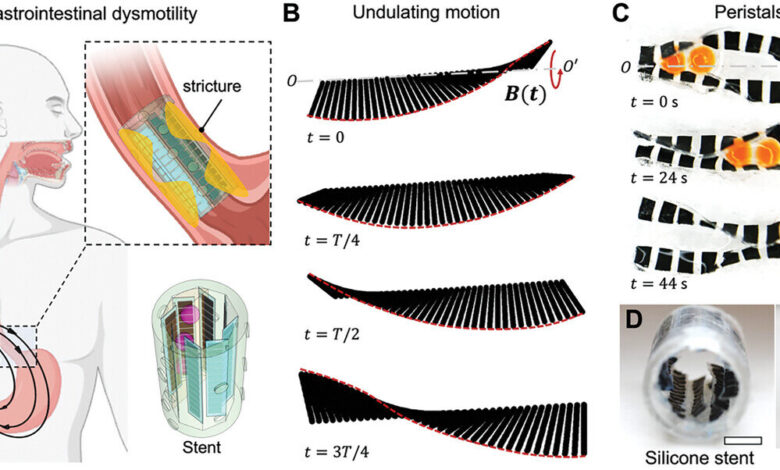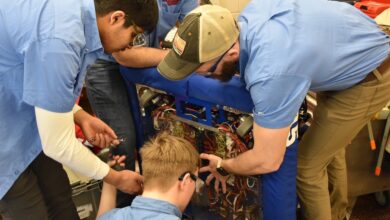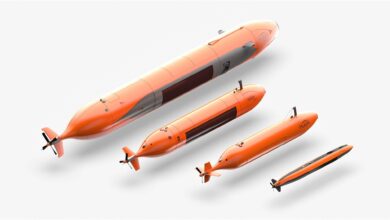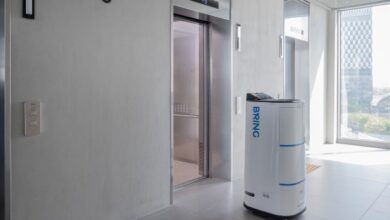Robotic device restores wavelike muscular function involved in processes like digestion

A team of Vanderbilt researchers has developed a wirelessly activated device that mimics the wavelike muscular function in the esophagus and small intestine responsible for transporting food and viscous fluids for digestion.
The soft-robotic prototype, which is driven by strong magnets controlled by a wearable external actuator, can aid patients suffering from blockages caused by tumors or those requiring stents. For example, traditional esophageal stents are metal tubes used in patients with esophageal cancer, mostly in an aging population. These patients risk food being blocked from entering the stomach, potentially causing a dangerous situation where food instead enters the lung.
Restoring the natural motion of peristalsis, the wavelike muscular transport function that takes place inside tubular human organs, “paves the way for next-generation robotic medical devices to improve the quality of life especially for the aging population,” researchers wrote in a paper in the journal Advanced Functional Materials describing the device.
The study was led by Xiaoguang Dong, Assistant Professor of Mechanical Engineering. This work was done in collaboration with Vanderbilt University Medical Center colleague, Dr. Rishi Naik, Assistant Professor of Medicine in the Division of Gastroenterology, Hepatology and Nutrition.
The device itself consists of a soft sheet of small magnets arrayed in parallel rows that are activated in a precise undulating motion that produces the torque required to pump various solid and liquid cargoes. “Magnetically actuated soft robotic pumps that can restore peristalsis and seamlessly integrate with medical stents have not been reported before,” Dong and the researchers report in the paper.
Dong, who also holds appointments in Biomedical Engineering and Electrical and Computer Engineering, said further refinements of the device could aid in other biological processes that may have been compromised by disease. For example, he said the design could be used to help transport human eggs from the ovaries when muscular function in the fallopian tubes has been impaired.
In addition, the researchers said, with advanced manufacturing processes, the device could be scaled down to adapt to even narrower passageways.
More information:
Saksham Sharma et al, Wireless Peristaltic Pump for Transporting Viscous Fluids and Solid Cargos in Confined Spaces, Advanced Functional Materials (2024). DOI: 10.1002/adfm.202405865
Citation:
Robotic device restores wavelike muscular function involved in processes like digestion (2024, June 7)
retrieved 7 June 2024
from https://medicalxpress.com/news/2024-06-robotic-device-wavelike-muscular-function.html
This document is subject to copyright. Apart from any fair dealing for the purpose of private study or research, no
part may be reproduced without the written permission. The content is provided for information purposes only.



